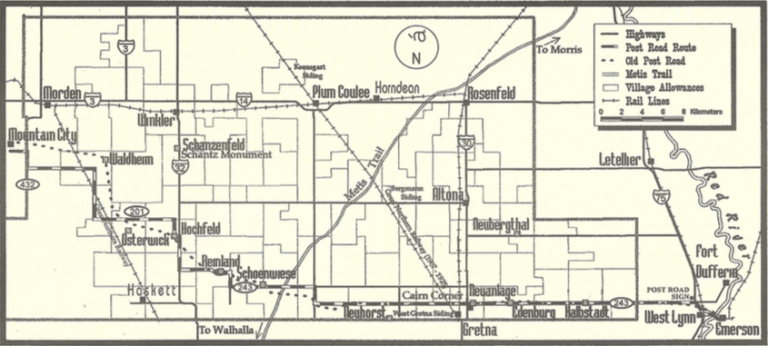Post Road Trail
A Lifeline for Mennonites
The Post Road was an important lifeline for Mennonites of the West Reserve. During night travel or blizzards, travellers easily became disoriented, and risked getting lost because the open prairie had no landmarks to guide them.
In Мау of 1878 the settlement director (Obervorsteher), Isaak Mueller, sent а letter to all West Reserve village mayors. It called for the marking of а road with posts from Emerson and across the reserve to Mountain City, located several miles southwest of Morden. This road favoured the villages along the way.
Тhе Post Road was the most important route of the West Reserve in its time, allowing farmers to bring their goods to market and come home with other necessities of life. After the government began to make regular roads in the area, these came increasingly into use since they were better maintained. First, the small paths were put to the plow, and then most of the Post Road itself was given over to crop production. Ву 1930, virtually all traces of the original Post Road had disappeared completely.
The Post Road Memorial Trail Tour has twelve memorial sites to mark the general course of the Post Road. Each location is marked with replica posts and an informational lectern highlighting the unique features of area.
Project Details
Project completed by the MMHS.
Post Road Brochure
For more information on the Post Road Trail, check out this brochure.
Our Mission
We seek to foster an understanding of and respect for the history and beliefs of the Mennonite people in the past and present, and to challenge them to give new expression to this heritage in the future.
Support Our Efforts
Help celebrate and preserve the Mennonite story, ensuring our history is passed on to the next generation.
